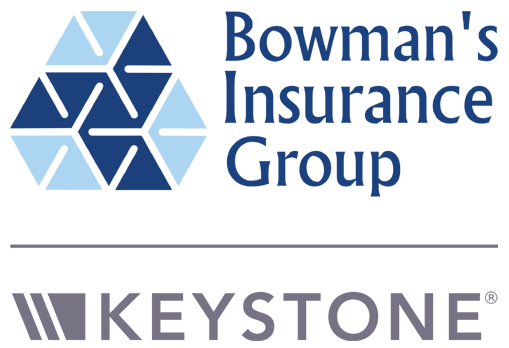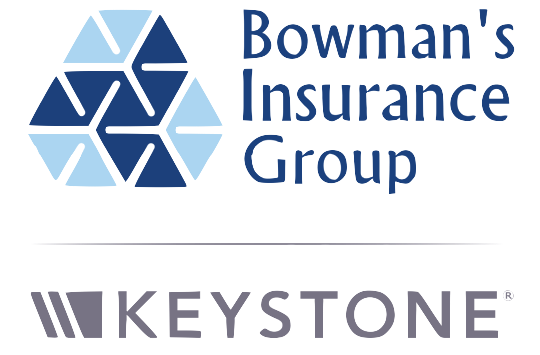What’s Driving the Increase in General Liability Insurance Rates for Pennsylvania Businesses?
GET INSURED NOW
In recent years, Pennsylvania businesses have witnessed a notable increase in general liability insurance rates. This trend has raised eyebrows among business owners and industry experts alike. Understanding the factors contributing to these rising costs is crucial for companies aiming to navigate the complexities of insurance and protect their assets effectively. This article delves into the various elements driving these changes, providing insights and guidance for Pennsylvania business owners.
The Current Landscape of General Liability Insurance
General liability insurance serves as a fundamental protection for businesses, covering claims related to bodily injury, property damage, and personal injury. As businesses grow and evolve, so do the risks they face, which can significantly impact insurance rates.
Understanding General Liability Insurance
General liability insurance is designed to shield businesses from financial losses resulting from lawsuits or claims made by third parties. This coverage is essential for companies of all sizes, as it helps mitigate the financial impact of unexpected incidents. It not only protects against direct claims but also covers legal defense costs, which can be substantial even if the claims are unfounded.
In Pennsylvania, the landscape of general liability insurance has been influenced by various factors, including economic conditions, changes in legislation, and shifts in the insurance market. As these elements evolve, so too do the rates that businesses must pay for coverage. Additionally, the rise of digital commerce and remote work has introduced new types of risks, such as cyber liability, prompting insurers to adapt their policies and pricing structures accordingly.
Recent Trends in Insurance Rates
Over the past few years, many Pennsylvania businesses have reported significant increases in their general liability insurance premiums. According to industry reports, the average rate hike has been notable, prompting many business owners to reevaluate their coverage options. Factors contributing to these increases include a surge in litigation, particularly in sectors like construction and healthcare, where the likelihood of claims is higher.
These trends are not unique to Pennsylvania; they are reflective of a broader national pattern. However, the specific circumstances within the state, including legal and regulatory factors, play a crucial role in shaping the local insurance market. For instance, Pennsylvania's unique tort laws and the prevalence of certain types of claims can lead to higher costs for insurers, which are then passed on to policyholders. Furthermore, the ongoing impacts of the COVID-19 pandemic have led to increased scrutiny of liability exposures, particularly concerning health and safety protocols, further complicating the insurance landscape.
Key Factors Contributing to Rising Rates
Several interrelated factors are driving the increase in general liability insurance rates for businesses in Pennsylvania. Understanding these can help business owners make informed decisions about their insurance needs.
Increased Claims Frequency and Severity
One of the primary drivers of rising insurance rates is the increasing frequency and severity of claims. As businesses navigate a complex landscape of risks, the likelihood of facing lawsuits or claims has risen significantly.
For instance, incidents such as slip-and-fall accidents, product liability claims, and professional errors can lead to substantial financial losses. Insurers are responding to this trend by adjusting their rates to account for the heightened risk exposure. Furthermore, the rise of social media has amplified the potential for reputational damage, as negative experiences can quickly spread and lead to increased claims. Businesses must now be more vigilant than ever in managing their risk profiles and ensuring they have adequate coverage to protect against unforeseen incidents.
Economic Factors and Inflation
The broader economic environment also plays a crucial role in shaping insurance rates. Inflation has been a significant concern in recent years, affecting various sectors, including insurance. As the cost of goods and services rises, so do the costs associated with claims, prompting insurers to increase their premiums.
Moreover, economic fluctuations can impact the overall financial health of businesses, making it more challenging for them to absorb rising insurance costs. This, in turn, can lead to a cycle of increasing premiums as insurers adjust to the changing economic landscape. Additionally, supply chain disruptions and labor shortages have further complicated the situation, leading to increased operational costs for businesses. As companies strive to maintain profitability amidst these challenges, they may find themselves reevaluating their insurance strategies to ensure they are adequately protected without overextending their budgets.
Legal and Regulatory Changes
Changes in legislation and regulations can have a profound impact on general liability insurance rates. In Pennsylvania, recent legal reforms aimed at protecting consumers have led to an increase in the number of lawsuits filed against businesses.
For example, changes in liability laws can make it easier for individuals to pursue claims against companies, resulting in a higher frequency of lawsuits. Insurers must account for these legal risks when determining their rates, leading to increased premiums for businesses. Additionally, the evolving landscape of workplace safety regulations has placed further pressure on companies to comply with stricter standards, which can also contribute to rising insurance costs. As businesses adapt to these regulatory changes, they may need to invest in training and compliance measures, adding another layer of financial consideration when it comes to managing their insurance needs.
The Impact of Industry-Specific Risks
Different industries face unique risks that can influence their general liability insurance rates. Understanding these industry-specific factors is essential for businesses seeking to manage their insurance costs effectively.
Construction and Contracting
The construction industry is particularly susceptible to rising insurance rates due to its inherent risks. Construction sites are often fraught with hazards, from accidents involving heavy machinery to potential injuries sustained by workers or passersby.
As a result, construction businesses may experience higher premiums as insurers account for the increased likelihood of claims. Additionally, the ongoing demand for construction projects in Pennsylvania can lead to a more competitive market, further driving up rates. Moreover, the complexity of modern construction projects, which often involve multiple subcontractors and intricate supply chains, can complicate liability issues. This interconnectedness means that a single incident can lead to multiple claims, further increasing the risk profile of construction firms.
Healthcare and Professional Services
Healthcare providers and professional services firms, such as law offices and accounting firms, also face unique challenges in terms of liability. The nature of their work often involves a higher risk of errors and omissions, which can result in costly lawsuits.
As the healthcare landscape continues to evolve, with increasing scrutiny on patient care and outcomes, insurance rates for healthcare providers may continue to rise. Similarly, professionals in other sectors must remain vigilant in managing their liability risks to avoid escalating costs. In the healthcare sector, the rise of telemedicine and digital health solutions introduces new variables that can affect liability, as providers navigate the complexities of remote patient care and data privacy. For legal and accounting professionals, the growing reliance on technology and data analytics can lead to increased exposure to cyber risks, necessitating a reevaluation of their insurance coverage to ensure they are adequately protected against potential breaches and the associated legal ramifications.
Strategies for Managing Rising Insurance Costs
While the increase in general liability insurance rates can be concerning for Pennsylvania businesses, there are several strategies that owners can employ to manage these rising costs effectively.
Conducting a Comprehensive Risk Assessment
One of the most effective ways to manage insurance costs is by conducting a thorough risk assessment. By identifying potential hazards and vulnerabilities within their operations, businesses can take proactive measures to mitigate risks.
This may involve implementing safety protocols, training employees, and investing in risk management strategies. By demonstrating a commitment to risk reduction, businesses may be able to negotiate more favorable insurance rates with their providers. Additionally, involving employees in the risk assessment process can foster a culture of safety and accountability, as they often have firsthand knowledge of potential risks and can contribute valuable insights. Regularly scheduled assessments can also help businesses stay ahead of emerging risks, particularly in industries that are rapidly evolving.
Shopping Around for Coverage
Another essential strategy is to shop around for insurance coverage. Not all insurers offer the same rates or coverage options, and comparing quotes from multiple providers can help businesses find the best deal.
Working with an experienced insurance broker can also be beneficial, as they can provide valuable insights into the market and help businesses identify policies that align with their specific needs. Brokers often have access to a wider range of products and can negotiate on behalf of the business, potentially uncovering discounts or specialized coverage options that may not be readily apparent. Furthermore, businesses should consider the financial stability and reputation of the insurance provider, as a reliable insurer will be more likely to fulfill claims promptly and effectively, which is crucial during times of need.
Reviewing Coverage Limits and Deductibles
Businesses should regularly review their coverage limits and deductibles to ensure they are adequately protected without overpaying for unnecessary coverage. Adjusting these parameters can lead to significant savings on premiums.
However, it is crucial to strike a balance between cost savings and adequate protection. Businesses must ensure that they are not exposing themselves to undue risk by lowering their coverage limits excessively. Engaging in discussions with an insurance advisor can help clarify the implications of various coverage levels, enabling business owners to make informed decisions. Additionally, understanding the specific risks associated with their industry can guide businesses in determining which coverages are essential and which can be modified or eliminated, ultimately leading to a more tailored and cost-effective insurance strategy.
The Future of General Liability Insurance in Pennsylvania
As Pennsylvania businesses continue to navigate the complexities of general liability insurance, understanding the factors driving rate increases will be essential for long-term success. The insurance landscape is ever-evolving, influenced by economic conditions, legal developments, and industry-specific risks.
Adapting to Changing Market Conditions
Businesses must remain agile and adaptable in the face of changing market conditions. Staying informed about industry trends, regulatory changes, and emerging risks will enable business owners to make proactive decisions regarding their insurance needs.
Additionally, fostering strong relationships with insurance providers can lead to better communication and more favorable terms. As the market continues to shift, businesses that prioritize collaboration with their insurers will be better positioned to navigate challenges. Regularly reviewing and updating insurance policies to reflect current operations and risk exposure is also crucial. This ensures that businesses are not underinsured or overpaying for coverage that no longer aligns with their needs.
Emphasizing Risk Management
In an environment of rising insurance costs, the importance of effective risk management cannot be overstated. Businesses that prioritize safety and risk reduction will not only protect their assets but may also benefit from lower insurance premiums over time.
Investing in employee training, safety equipment, and risk mitigation strategies can yield significant returns, both in terms of reduced claims and enhanced operational efficiency. By fostering a culture of safety, businesses can create a more resilient organization. Furthermore, implementing comprehensive risk assessments can help identify potential vulnerabilities before they escalate into costly incidents. Regular drills and scenario planning can prepare employees for unexpected situations, ensuring that they know how to respond effectively and minimize potential damages.
Moreover, leveraging technology can play a pivotal role in enhancing risk management efforts. Utilizing data analytics to track incidents and identify patterns can help businesses understand their risk landscape better. By adopting innovative solutions such as IoT devices for real-time monitoring, companies can proactively address safety concerns, ultimately leading to a more secure workplace and potentially lower insurance costs. As the industry evolves, those who embrace these advancements will likely find themselves at a competitive advantage.
Conclusion
The increase in general liability insurance rates for Pennsylvania businesses is a multifaceted issue driven by various factors, including rising claims frequency, economic conditions, and legal changes. Understanding these dynamics is essential for business owners seeking to protect their interests and manage their insurance costs effectively.
By conducting comprehensive risk assessments, shopping for coverage, and emphasizing risk management, businesses can navigate the complexities of the insurance landscape with greater confidence. As the market continues to evolve, staying informed and adaptable will be key to ensuring long-term success in an increasingly challenging environment.
Ultimately, the ability to manage rising insurance costs while maintaining adequate coverage will be a defining factor for Pennsylvania businesses in the years to come. By prioritizing risk management and fostering strong relationships with insurers, companies can position themselves for success in an ever-changing market.













